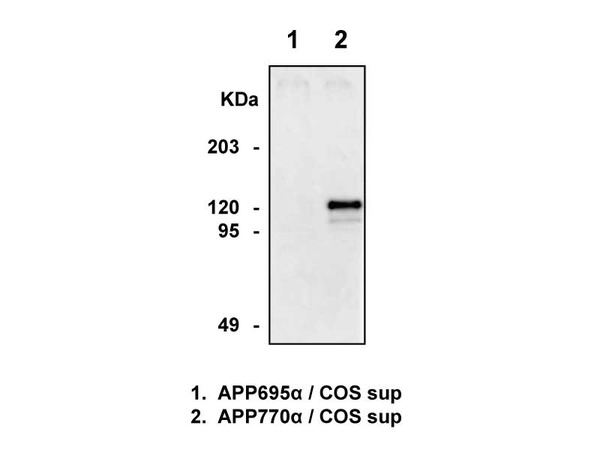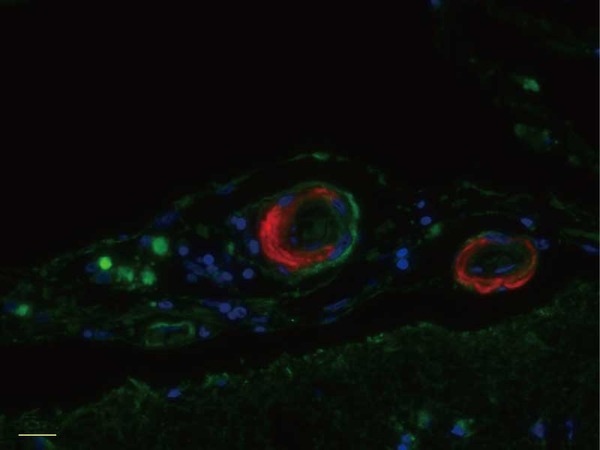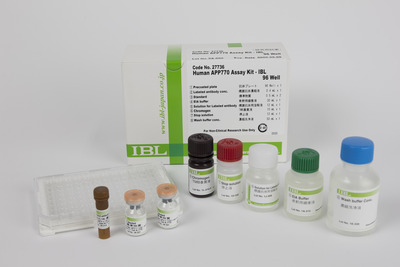- HOME >
- For Researchers >
- Product Search >
- Search Result >
- #28133 Anti-Human APP770 (351) Rabbit IgG Affinity Purify
Product Search
#28133 Anti-Human APP770 (351) Rabbit IgG Affinity Purify
- Intended Use:
- Research reagents
- Application:
- WB, IHC
- Package Size1:
- 100μg
- Package Size2:
- 10μg
- Note on Application Abbreviations
- WB:Western Blotting
- IHC:Immunohistochemistry
※ The product indicated as "Research reagents" in the column Intended Use cannot be used
for diagnostic nor any medical purpose.
※ The datasheet listed on this page is sample only. Please refer to the datasheet
enclosed in the product purchased before use.
Product Overview
Product Overview
| Product Code | 28133 |
|---|---|
| Product Name | Anti-Human APP770 (351) Rabbit IgG Affinity Purify |
| Intended Use | Research reagents |
| Application | WB, IHC |
| Species | Human |
| Immunizing antigen | Synthetic peptide of a part of human APP770 (KTTQEPLARDPVKL) |
| Purification Method | Purified with antigen peptide |
| Package Form | Lyophilized product in PBS containing 1 % BSA and 0.05 % NaN3 |
| Storage Condition | 2 - 8℃ |
| Poisonous and Deleterious Substances | Applicable |
| Cartagena | Not Applicable |
| Package Size 1 | 100μg |
| Package Size 2 | 10μg |
| Remarks1 | The commercial use of products without our permission is prohibited. Please make sure to contact us and obtain permission. |
Product Description
Product Description
Alzheimer's disease (AD) is a typical senile dementia and it is believed that accumulation of Amyloidβ (Aβ) in brain parenchyma is a major cause of the disease. Meanwhile, accumulation of Aβ has been also observed on cerebrovascular walls of nearly 90% of individuals suffering with AD. Aβ is known to be produced from Amyloid Precursor Protein (APP) by cleavage with two types of protease (β- and γ- secretase) and Aβ molecules which accumulate in brain parenchyma are mainly produced from APP expressed in neurons, APP695. In contrast to this, another different APP, APP770, was found to be expressed in cerebrovascular endothelial cells, and it has been newly reported that the Aβ produced from the APP770 can accumulate on cerebrovascular walls. This antibody recognizes human APP770.
FAQ
FAQ
-
 Q.Is endogenic peroxidase treatment required for fluorescence stain?
Q.Is endogenic peroxidase treatment required for fluorescence stain? -
 A.No, it is not required.
A.No, it is not required. -
 Q.Regarding formic acid treatment, is inactivation treatment by citric acid autoclave required?
Q.Regarding formic acid treatment, is inactivation treatment by citric acid autoclave required? -
 A.No, inactivation treatment by citric acid autoclave is not required. However, we recommend formic acid treatment (after deparaffinization, leave it in formic acid for 5 to 30 minutes and wash it by running water.) if you use brain tissue.
A.No, inactivation treatment by citric acid autoclave is not required. However, we recommend formic acid treatment (after deparaffinization, leave it in formic acid for 5 to 30 minutes and wash it by running water.) if you use brain tissue.
























